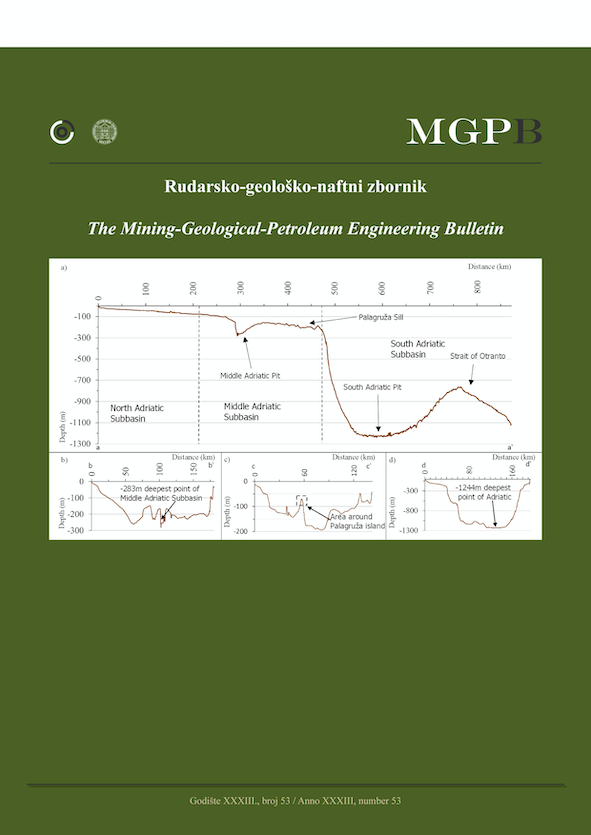Drilling bit selection in a formation with different sedimentary facies using the Markov chain: A case study at one of the oil fields in the south of Iran
DOI:
https://doi.org/10.17794/rgn.2021.2.8Keywords:
Dashtak Formation, drilling bit optimization, lithology, transition matrix, sedimentary faciesAbstract
The selection of drill bit is an essential issue in the well planning. Furthermore, identification and evaluation of sedimentary rocks before well drilling plays a crucial role in choosing the drill bit. Moreover, the Markov chain as a stochastic model is one of the powerful methods for identifying lithological units, which is based on the calculation of the transition probability matrix or transition matrix. The Markov chain experiences transitions from one state (a situation or set of values) to another according to specified probabilistic rules. In this paper, this is the first time that the Markov chain was implemented for bit selection in a formation with different sedimentary facies (such as Dashtak formation). Therefore, proper drill bit was recommended by utilizing the transition matrix of rock facies and available bits. This process was carried out in two wells where the thicknesses of Dashtak formation are 960 meters and 1410 meters. Consequently, the results indicate that the Markov chain is a practical method for selecting bits in a sequence of rock facies based on an acceptable matching between the reality mode (the used bits in the well) and the Markov chain results. Besides, in the case of using an improper bit in a well, and using a bit in washing and reaming operation, there were differences between the real used bits and the Markov chain outputs.
Downloads
Published
How to Cite
Issue
Section
License
Copyright (c) 2021 authors and journal

This work is licensed under a Creative Commons Attribution 4.0 International License.
Creative Commons-BY
Authors who publish with this journal agree to the following terms:
In agreeing this form, you certify that:
- You read the ethical codex of the RGN zbornik available at journal web.
- You submitted work is your original work, and has not previously been published and does not include any form of plagiarism.
- You own copyright in the submitted work, and are therefore permitted to assign the licence to publish to RGN zbornik.
- Your submitted work contains no violation of any existing copyright or other third party right or any material of an obscene, libellous or otherwise unlawful nature.
- You have obtained permission for and acknowledged the source of any illustrations, diagrams or other material included in the work of which you are not the copyright owner.
- You have taken due care to ensure the accuracy of the work, and that, to the best of your knowledge, there are no false statements made within it.
- All co-authors of this submitted work are aware of, and in agreement with, the terms of this licence and that the submitted manuscript has been approved by these authors.
Publication licence
You retain copyright in your submitted work, according to journal license policy (CC-BY). By signing this form you agree that RGN zbornik may publish it under the publication licence. In summary the licence allows the following:
Anyone is free:
- To copy, distribute, display, and perform the work.
- To make derivative works.
Under the following conditions:
- The original author must always be given credit.
- The work may not be used for commercial purposes.
- If the work is altered, transformed, or built upon, the resulting work may only be distributed under a licence identical to this one.
Exceptions to the licence
In addition to publishing the work printed under the above licence, RGN zbornik will also enable the work to be visible online.
The journal editorial can change the licence rules anytime but it cannot retroactively restrict author(s) rights.


